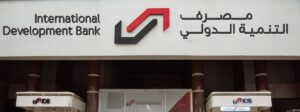- Zambia’s economic growth projections have dropped to 1.2 per cent, down from an earlier estimate of 2.3 per cent.
- Key sector agriculture has shrunk by over 20% YoY even as energy output dropped by nearly 10%, affecting electricity supply.
- Compounding the challenge, inflation in Zambia rose sharply, reaching 15.7% in October 2024.
Zambia’s economic outlook for 2024 has suffered a downturn, with the main sectors facing substantial contractions that could weigh on the South African country’s overall recovery.
According to the latest review by the International Monetary Fund (IMF), Zambia’s economic growth projections have dropped to 1.2 per cent, down from an earlier estimate of 2.3 percent. This is largely due to wide-ranging electricity shortages and declining activity across critical industries such as agriculture and energy.
After completing the IMF review, Zambia will access about $185.5 million in financing (SDR 139.9 million) for budgetary support in a tough economic year.
The IMF’s review concluded after a series of talks with top Zambian economic officials, revealed a grim picture of Zambia’s near-term economic trajectory. With key sectors like agriculture shrinking by over 20 per cent year-over-year and energy output decreasing by nearly 10 per cent, Zambia’s economic activity has decelerated, impacting domestic production and consumer confidence.
The IMF said the country’s real GDP growth was only 1.9 per cent in the first half of 2024, far below expectations.
Power shortages drain Zambia’s growth as drought persists
At the heart of Zambia’s economic slowdown is a persistent energy crisis. Shortfalls in electricity supply have hindered production in industries and disrupted day-to-day activities for citizens, adding pressure to an already burdened economy.
The energy sector, which contracted by 9.6 per cent this year, has exacerbated production bottlenecks across industries dependent on a stable power supply.
Adding to the challenge, inflation in Zambia rose sharply, reaching 15.7 per cent in October 2024. This spike, largely fueled by rising food prices and the kwacha’s depreciation, has pushed inflation further away from the Central Bank’s target band of 6-8 per cent, eroding consumer purchasing power and adding to household pressures across the country.
These conditions reflect Zambia’s mounting difficulties in balancing growth and stability amidst a challenging global and domestic economic environment.
Read also: Climate crisis: $11.2M insurance payout for Malawi’s drought-stricken families
Agricultural decline adds to economic strain
Zambia’s agricultural sector, a cornerstone of its economy and critical for employment and food security, has been especially hard-hit. Due to erratic weather patterns and prolonged drought conditions, the sector recorded a steep 20.6 percent year-over-year decline in output.
These challenges have reduced harvests and strained rural communities that rely on agriculture as their main livelihood.
This contraction has caused a broad impact. Reduced agricultural output means higher food prices, which compounds inflationary pressures. Additionally, weakened agricultural performance affects Zambia’s export capacity, as agriculture contributes significantly to regional trade and domestic revenue.
With no quick resolution to these weather challenges, the sector’s struggles are expected to weigh on Zambia’s economy well into 2025.
Fiscal Pressures Amid Slowing Growth
The IMF also reported that fiscal pressures are mounting as Zambia’s government contends with limited domestic financing options. Although Zambia achieved a primary budget surplus of 3.4 per cent of GDP by mid-2024, surpassing its target, spending constraints and the need to scale up social assistance are creating challenges.
These pressures are matched by efforts to stabilize public debt, a longstanding issue for Zambia and a focus of the IMF’s Extended Credit Facility (ECF) program.
While the government’s commitment to fiscal consolidation has brought some budgetary discipline, the IMF warns that constrained domestic financing could limit Zambia’s ability to respond effectively to economic and climate-related shocks.
The government has been urged to pursue additional domestic revenue avenues, such as rationalizing tax exemptions and tightening compliance, to help meet spending needs and support long-term debt sustainability.
Signs of recovery and long-term risks
Despite the difficult outlook for 2024, the IMF expressed cautious optimism for Zambia’s medium-term prospects. Growth in 2025 is projected to rebound to 6.2 per cent, driven by expected recoveries in agricultural output and mining production and a gradual resolution of the electricity shortages that have hampered growth this year.
The IMF also pointed to anticipated improvements in Zambia’s external position, with higher copper exports and foreign direct investment (FDI) expected to bolster the country’s foreign reserves and provide a cushion for future economic stability.
Nevertheless, significant downside risks remain. Zambia’s economy is highly vulnerable to fluctuations in global commodity prices, particularly for copper, a key export.
Structural issues, such as inefficient public spending and a heavy reliance on external financing, also pose persistent challenges. The IMF highlighted the importance of maintaining flexible monetary policies to control inflation while ensuring that Zambia’s kwacha currency remains resilient in the face of external pressures.
Read also: UK Injects $7.7 Million to Boost Zambia-Tanzania Trade Route Upgrade
Addressing structural challenges
To tackle these economic headwinds, the IMF cited Zambia’s need to build resilience through structural reforms. Recommendations include broadening the tax base, enhancing transparency in state-owned enterprises, and reducing regulatory burdens that hinder private-sector growth.
In particular, the IMF called for improvements in the energy sector, advocating for competitive pricing and open access to infrastructure to drive down costs. Such reforms could attract investment in sectors beyond mining and agriculture, diversifying Zambia’s economy and creating a more sustainable growth model.
The government’s commitment to these reforms will be critical in determining Zambia’s economic trajectory. Measures to promote greater use of the domestic currency in local transactions, backed by prudent monetary policies and improved banking regulations, could further strengthen Zambia’s economic foundation.
However, these initiatives will require consistent policy implementation and accountability, especially in managing the public sector and fostering an environment conducive to private investment.
Zambia’s economic outlook: A cautious optimism
While Zambia’s economic challenges in 2024 are formidable, the government’s engagement with the IMF and commitment to reform offer a pathway to recovery. The projected growth rebound in 2025 is encouraging, but it hinges on Zambia’s ability to address its immediate fiscal pressures and long-standing structural issues.
The IMF’s latest review underscores the urgent need for reform and highlights Zambia’s potential to achieve a more stable and resilient economy if these reforms are pursued consistently.











